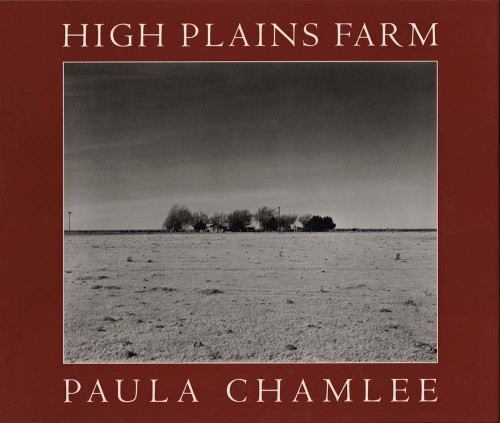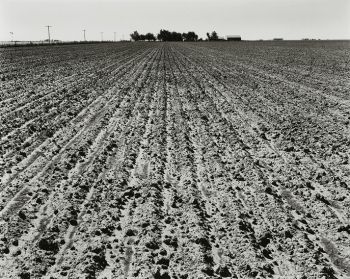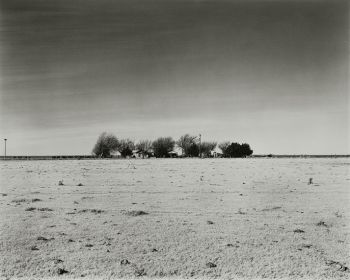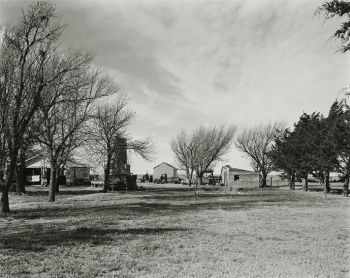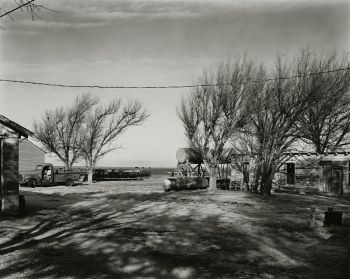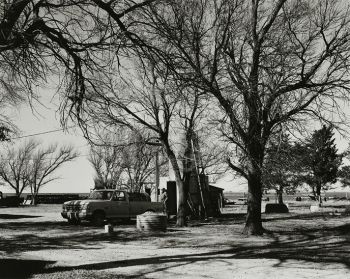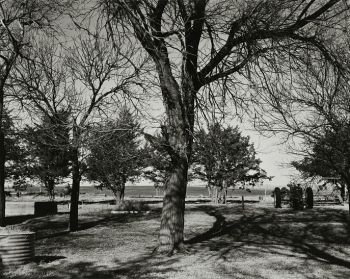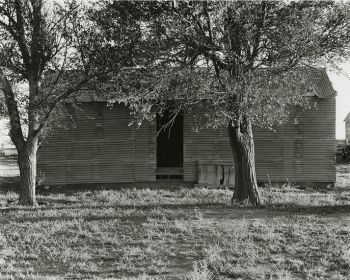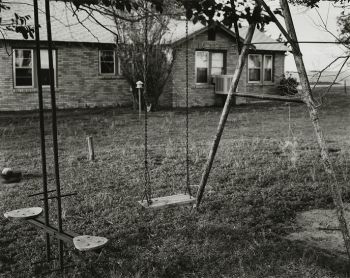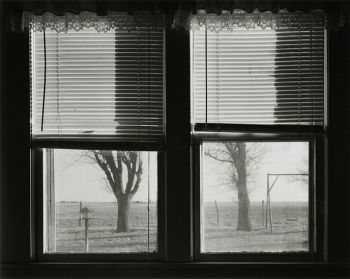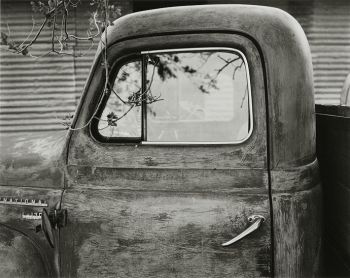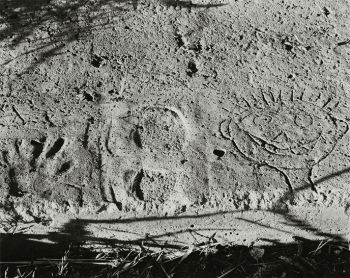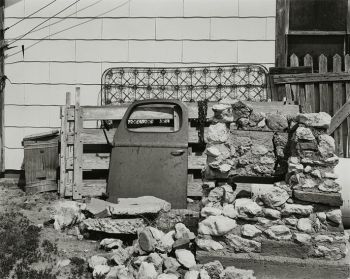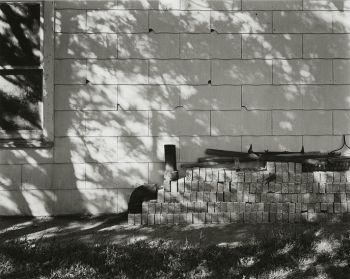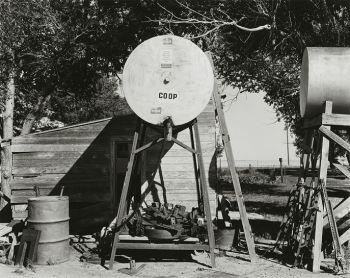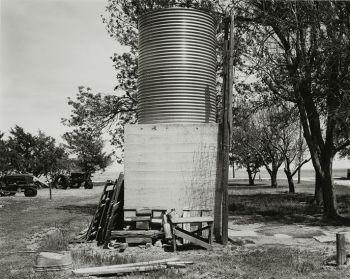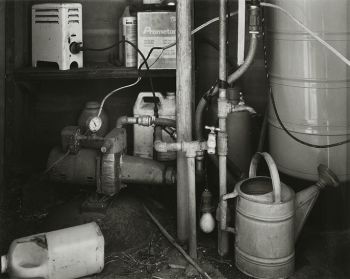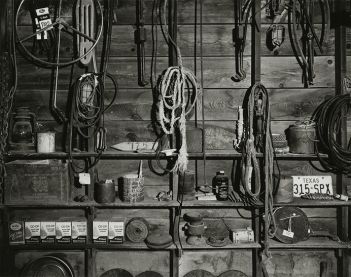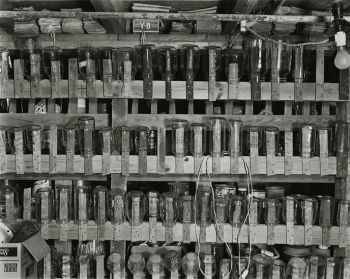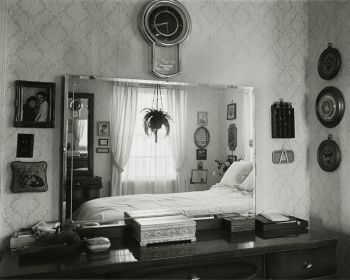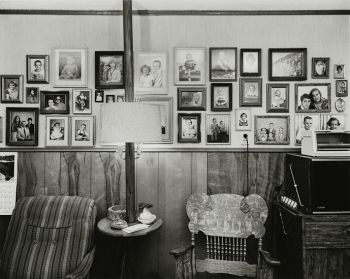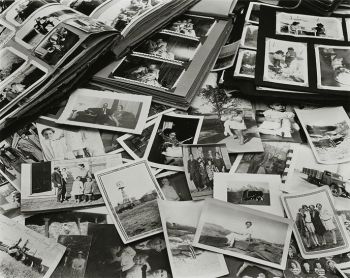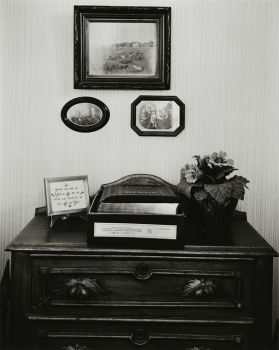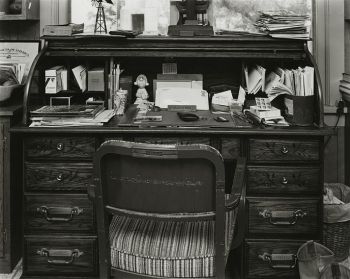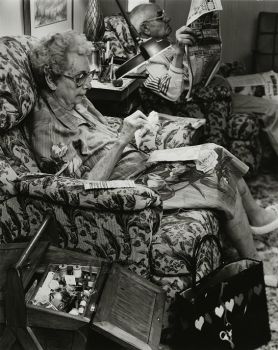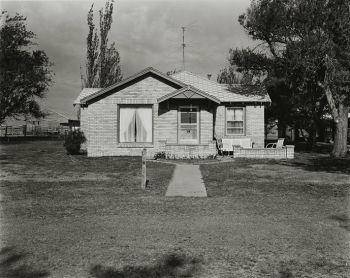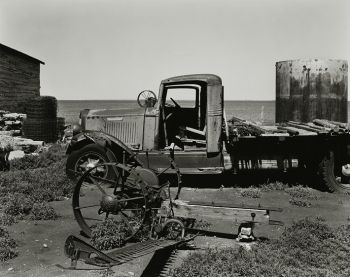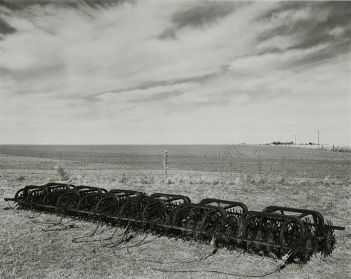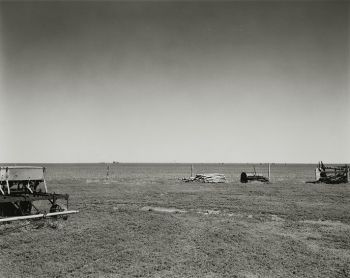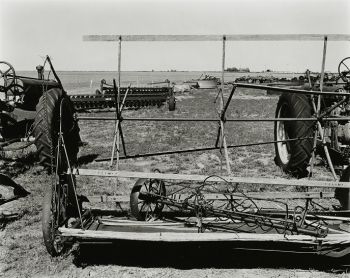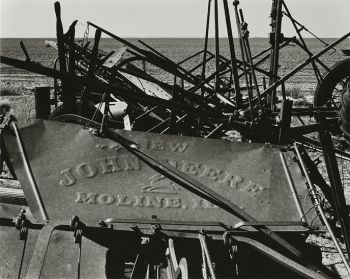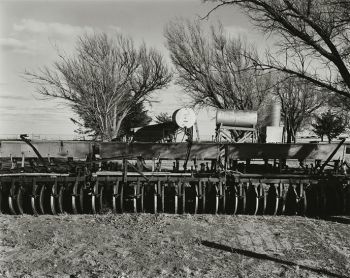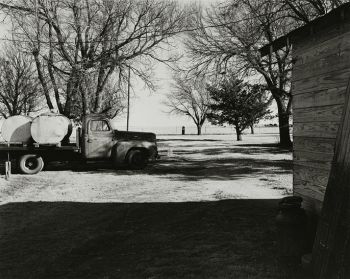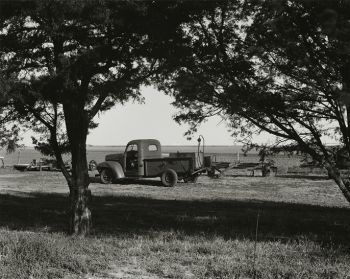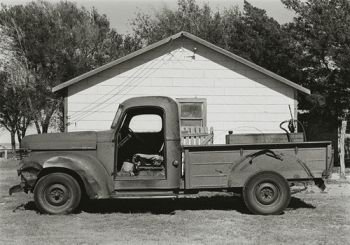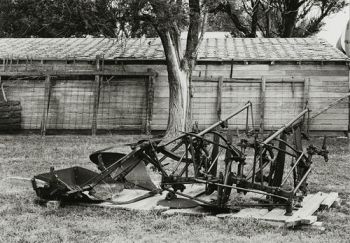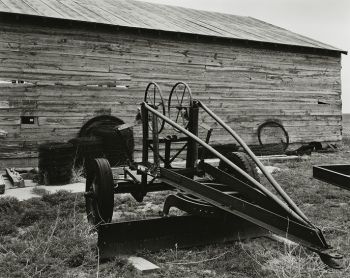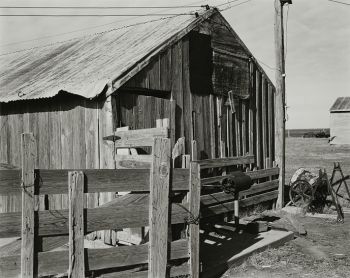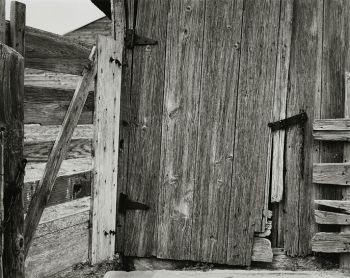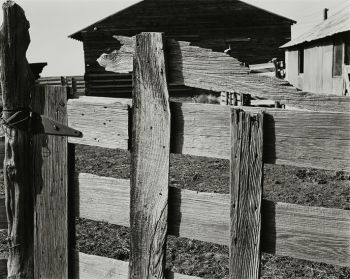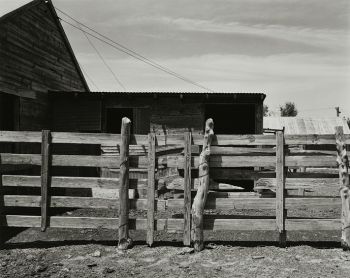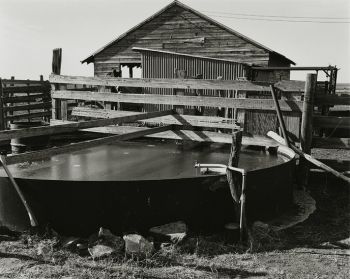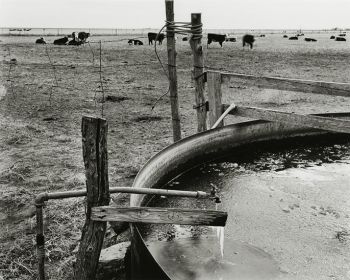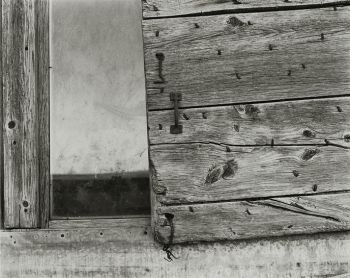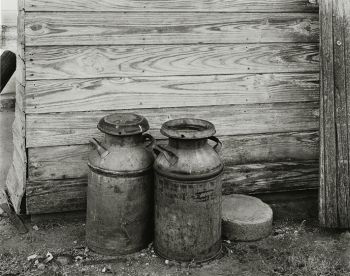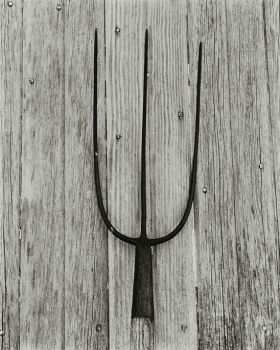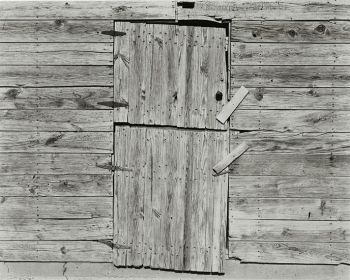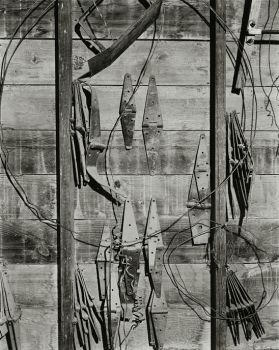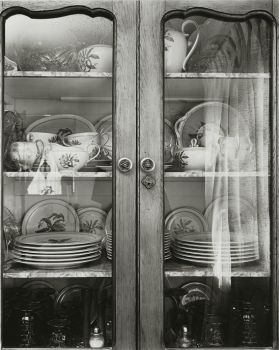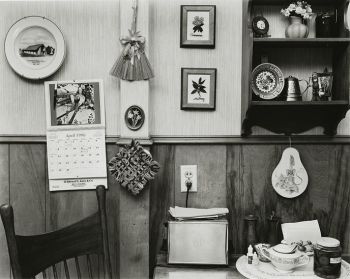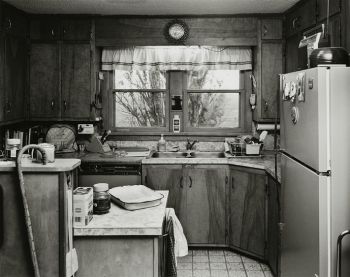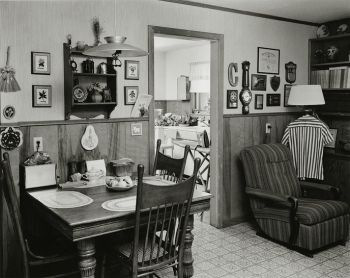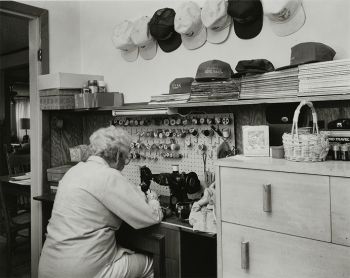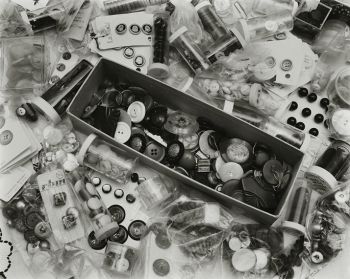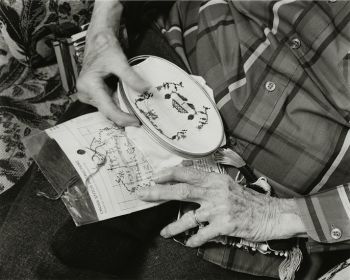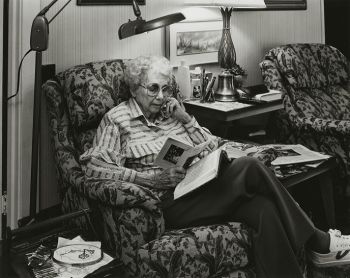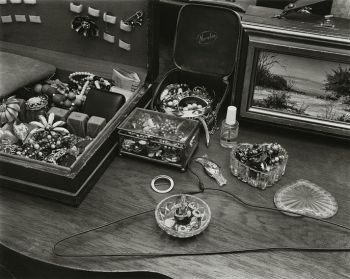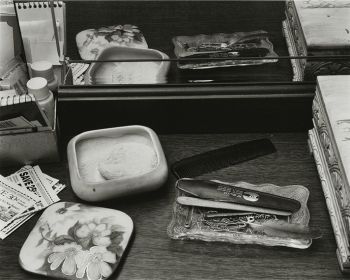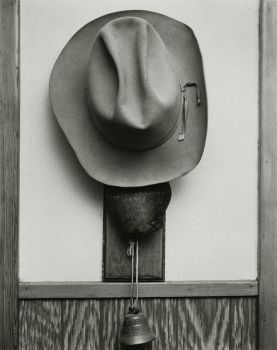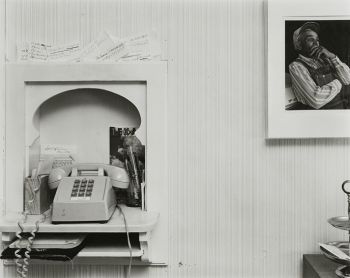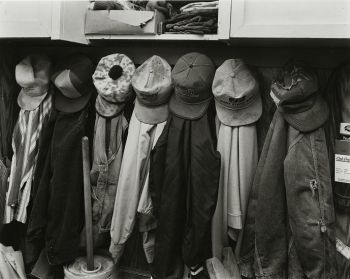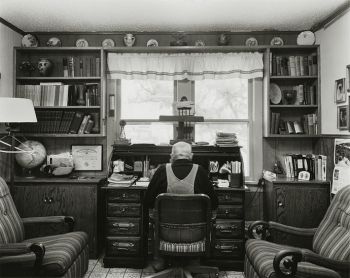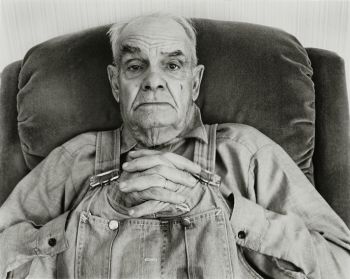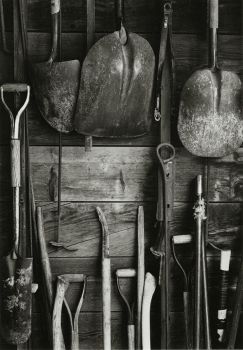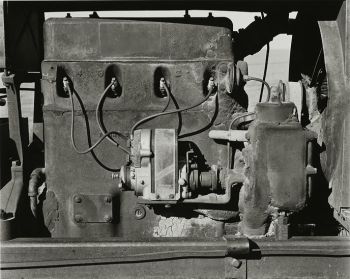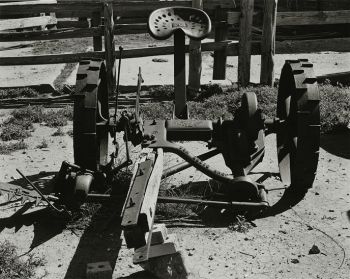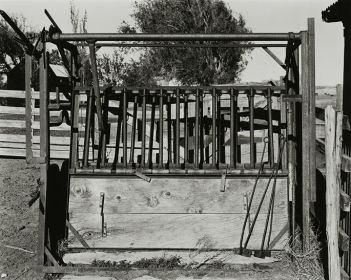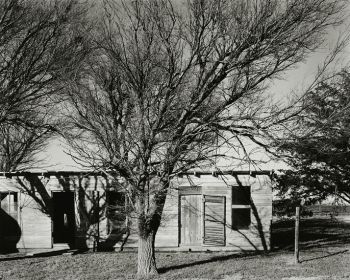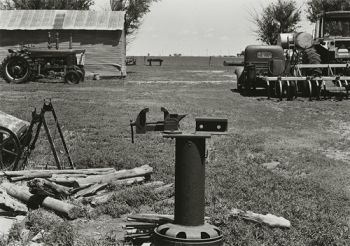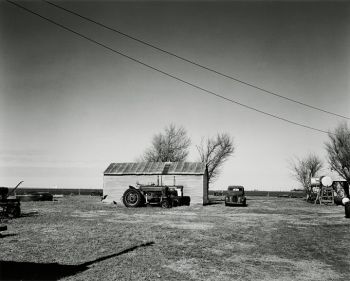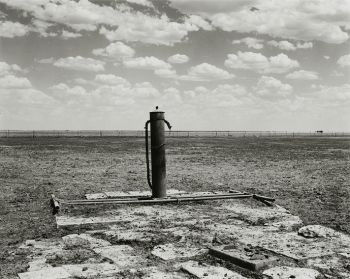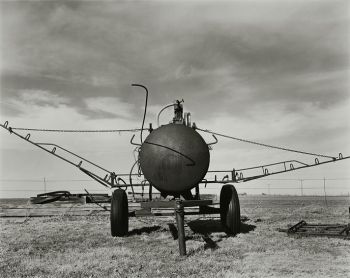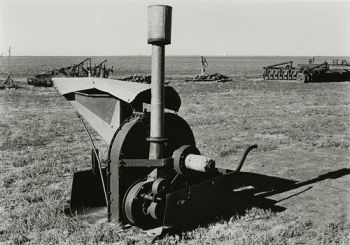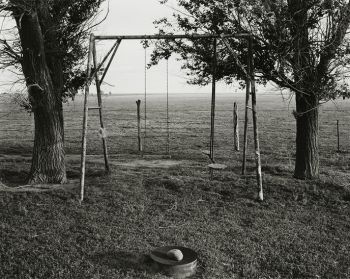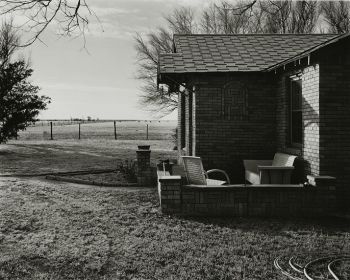High Plains Farm (1996)
Paula Chamlee
My second book, High Plains Farm, was published in 1996, and printed again at Gardner Lithograph. In the early 1990s, I had been thinking about making a visual record of my family farm where I grew up on the High Plains of the Texas Panhandle. At that time my parents were already in their mid 80s, and I wanted to make photographs of our farm and homestead while my parents and the spirit of the place were still alive and active. My parents farmed 1,100 acres all by themselves in addition to maintaining livestock. By the time my father was in his late 70s, he had allowed himself a bit of retirement by downsizing the considerable livestock of cattle, horses, hogs, and chickens, to merely a few dozen head of cattle and a couple of horses. He was always a happy man if he was working. Both of my parents suffered through the Great Depression, but my father's family suffered doubly through the dust bowl years of the 1930s. So I was raised in the atmosphere of a strong work ethic and taking nothing for granted.
When I conceived of doing the series, I thought it might end up being only a personal record for me, and possibly a series of pictures for a small exhibition. On my first trip back to the home place, I felt that I needed to see as an outsider as well as an insider while I looked so closely to my roots and this place that had formed me. But, I resolved to not worry about it and trusted that the pictures would have a deeper appeal.
After my first photographing trip to the farm in 1994, I had a rather large body of work to print, from which I could think about what I had accomplished and what remained be done. After making those prints, Michael and I happened to be traveling southward and stopped to see the Brooks Johnson, Curator of Photography at the Chrysler Museum of Art. After showing him my High Plains Farm series of photographs, he said, "This is important work. I hope you're doing a book." At that moment, he confirmed just what I had been thinking—making a book of these photographs. I immediately said "Yes, I'm doing a book."
I made five trips to my family farm during 1994, '95, and '96, and made all of the photographs with my 8x10 camera, and used the 5x7 reducing back for a few in the series. On each trip, I would do writing about the farm, my parents, the land, and the Texas Panhandle history that placed everything in context. I met with foundations to try to raise money to support the project, met with the director of the Amarillo Museum of Art, and was introduced to a documentary film crew who made a PBS film about me doing this work. The book was published in 1996, and all 81 photographs from the book were shown at the Amarillo Museum of Art, along with the documentary film. The exhibition then traveled to many museums in the following years. There are 299 finished photographs in the series, and one complete set is archived at the Harry Ransom Humanities Research Center at the University of Texas, in Austin, thanks to a dear friend and donor. Roy Flukinger, who at that time was Senior Curator of Photography and Film at the HRHRC, wrote glowing comments about the book, among them, "...for these are landscapes of the human heart. And, as such, they sweep from the inner soul to the infinite horizon....Her series remains simultaneously epic in its vision and intimate in its humanity....Thanks for going home again, Paula. And for leaving the gate open for us to follow along."
George F. Thompson, President, Center for American Places, wrote a lovely and insightful Foreword for the book, and I wrote the Introduction that sets the book in historical context. Michael suggested that I write the many personal stories that would accompany thumbnail images in the back of the book for readers who want to have more information, such as descriptions and illuminating facts as well as personal accounts. There are only seven places in the book where writing appears opposite the Plates—short writings that imply the way of life and the spirit of the place. Over the years, I have been very gratified to learn that people from all walks of life have found High Plains Farm to have a moving and universal resonance. One photography collector and filmmaker told me that if I never did another thing in the world of photography, this contribution would be enough.
Purchase
